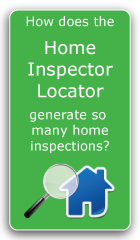Home Safety Checklist
To Use This Checklist
Answer the questions in each of the following sections. If you answer "no" to any of the questions, follow the tips to correct the problem. If you cannot correct the problem, contact one of the agencies at the end of the checklist. Making notes for yourself as you read through the questions will help you increase the safety of your environment.
Living Room
Do you have…
|
Yes
|
No
|
Heaters away from drapes and furniture?
|
|
Yes
|
No
|
Light switches that can be reached easily when entering a room?
|
|
Yes
|
No
|
Enough lighting?
|
|
Yes
|
No
|
Furniture arranged so no one will trip on it and no clutter?
|
|
Yes
|
No
|
Sturdy chairs and sofas at a height from which you can easily stand up or sit down?
|
|
Yes
|
No
|
Floor rugs secured to floor?
|
|
Yes
|
No
|
Electrical cords behind furniture?
|
|
Yes
|
No
|
A phone that is easily reached from the floor?
|
|
Yes
|
No
|
Area rugs with non-slip backing?
|
Tips
-
If using a portable heater, make sure it is in good condition and has an approved automatic shut-off device.
-
Make sure that all electrical cords are in good repair, and secure loose cords.
-
Consider purchasing a cordless phone.
-
Make sure there are arm rests on at least one chair for added push-off when standing up.
Kitchen
Do you have…
|
Yes
|
No
|
A sturdy stool for reaching your cupboards?
|
|
Yes
|
No
|
Your everyday dishes and kitchen supplies within easy reach?
|
|
Yes
|
No
|
Your tile, linoleum, scatter mats and carpeting secure to floor?
|
|
Yes
|
No
|
The dials on your stove clearly marked ‘ON/OFF’?
|
Tips
-
Use a stool with a handle and rubber tips.
-
Keep heavy items in lower cupboards and light items no higher than shoulder height.
-
Remove scatter rugs that do not have non-slip backing.
-
If you wax the floor use a non-slip wax, this should be written on the label.
-
Don’t wear loose clothing while cooking, hanging fabric can easily catch fire.
-
Turn pot handles inward to prevent tipping the pot and make sure that the stove is off before going out or to bed.
-
An appliance store will order new dials for your stove.
-
A red marker can also be used to mark the dial so you can see it more easily.
-
Use oven mitts for handling all hot items.
-
Remember items from the microwave are also HOT.
-
Eat a nutritious, balanced diet with an emphasis on fresh vegetables, fruit and grains.
Bedroom
Do you have…
|
Yes
|
No
|
Easy access to the telephone and lamp from your bed?
|
|
Yes
|
No
|
Easy access to your telephone from the floor (in case you fall and can’t get up)?
|
Tips
-
Keep a flashlight with extra batteries at your bedside to help you see at night. Never use a candle.
-
Consider purchasing a cordless phone and keep it near you at all times.
-
Post emergency phone numbers by all phones for easy access.
-
If you are unstable and prone to falls you may want to have an emergency call system (i.e., Protect Alert or Lifeline) to carry at all times.
-
Wear good fitting shoes versus floppy slippers.
-
Consider keeping a cane near your bedside for getting up at night (even if you don’t usually use one).
-
Take your time getting up. Remain sitting for a minute and stand up slowly. Stand until you are ready to walk.
Bathroom
Do you have…
|
Yes
|
No
|
Grab bars in your bathroom?
|
|
Yes
|
No
|
A rubber bathmat or non-skid surface in your tub?
|
|
Yes
|
No
|
A non-skid bathmat beside your tub?
|
|
Yes
|
No
|
A clear, well lit path from the bedroom to bathroom for night-time travel?
|
Tips
-
If unsteady on your feet, a stool with non-skid feet should be used to sit on when showering or bathing.
-
To increase safety, nightlights may be placed in the hallway and bathroom, and grab bars may be installed around the tub and toilet.
-
The towel rack and soap dish are not designed to be used as grab bars.
-
Grab bars may be purchased from a home health service and supply store (see yellow pages) where you can get advice on safety products and their installation.
-
If you have any concerns about the safety of your bathroom, please call the South West Community Care Access Centre (the phone number is also at the end of this checklist).
Basement
Do you have…
|
Yes
|
No
|
Stairways and basement areas that are well lit and free of clutter?
|
|
Yes
|
No
|
Secure handrails on both sides of the stairway?
|
|
Yes
|
No
|
The knowledge to change a fuse or reset a circuit breaker?
|
|
Yes
|
No
|
Your hot water heater set no higher than 130°F or 54°C?
|
|
Yes
|
No
|
The knowledge to store and dispose of hazardous waste safely?
(e.g., paint, turpentine, gasoline, etc.)
|
Tips
-
There should be light switches at the top and bottom of all stairways.
-
Adding a strip along the edge of each step, in a contrasting colour, makes the stairs easier to see (use paint or tape).
-
Handrails on both sides of stairwells should project beyond the top and bottom step.
-
Learn where your fuse box or circuit breaker panel is located.
-
Check with an electrician or the Electrical Safety Authority at 1-877-372-7233 regarding concerns about fuses/circuits.
-
If you are unsure of which fuse to buy, take the fuse you want replaced to the store and let the clerk advise you.
-
Phone your appropriate regional or municipal office for information about the disposal of hazardous wastes.
Medications
Do you…
|
Yes
|
No
|
Have your medications in clearly labelled bottles?
|
|
Yes
|
No
|
Keep your medications in a cool, dry area? (NOT THE BATHROOM)
|
|
Yes
|
No
|
Take your medication in a brightly lit room?
|
|
Yes
|
No
|
Discard your medications after the expiry date by taking them to your local pharmacist?
|
|
Yes
|
No
|
Use only medication that has been prescribed for you?
|
|
Yes
|
No
|
Use the same pharmacy for all your medication needs?
|
|
Yes
|
No
|
Talk with your pharmacist before purchasing over the counter and herbal medications?
|
|
Yes
|
No
|
Understand the purpose for each of the medications you are taking?
|
|
Yes
|
No
|
Follow directions to avoid alcohol with specific medications?
|
|
Yes
|
No
|
Review all medications on a regular basis with your physician, pharmacist or RN?
|
|
Yes
|
No
|
Have you been checked for osteoporosis? Ask your physician. Medications, exercise and nutrition can all help you.
|
Tips
-
Ask your doctor or pharmacist questions about your medications such as why you are taking it; side effects and alternatives to taking medications.
-
Make a list of all prescription and over the counter medications you take and keep it with you at all times, include your allergies and medical conditions.
-
Show this list to your doctor when he is prescribing your medication.
-
If you have difficulty swallowing pills or opening a container, talk to your pharmacist.
-
The use of a weekly pill dispenser case is useful to prevent over or under drug ingestion.
Remember, you have a right to be informed and to ask questions!
Security Checklist
Do you have…
|
Yes
|
No
|
Lights on in the house when you are away for any length of time?
|
|
Yes
|
No
|
A door viewer on your exterior doors?
|
|
Yes
|
No
|
Doors and Windows that have locks that work?
|
Tips
-
Putting a couple of lights on timers and leaving a radio on in the house will help deter burglars.
-
Always let a neighbour know you are away.
-
A door viewer with good lighting outside is the best security system because you can see the person before opening the door.
-
Keep all doors and windows locked at all times, even when you are inside the house.
-
Don’t open the door to anyone you are not expecting. Be confident. "JUST SAY NO"!
-
If you have any concerns, call your neighbour or the police immediately.
-
A friend or family member may be willing to be your "buddy" so that you may call them in cases of concern. Make sure they have a key to your house.
-
Make arrangements for someone to pick up your mail, shovel your snow or cut your lawn while you are away.
-
Know how to safely operate your apartment intercom.
Fire Hazard Check
Do you have…
|
Yes
|
No
|
Electrical cords in good condition and out of travel paths?
|
|
Yes
|
No
|
Electrical outlets that are not overloaded?
|
|
Yes
|
No
|
One working smoke alarm for each level of your home?
|
|
Yes
|
No
|
A fire extinguisher in your kitchen?
|
|
Yes
|
No
|
An emergency exit and an escape plan in case of fire?
|
|
Yes
|
No
|
Carbon monoxide detectors?
|
Tips
-
Electrical cords under carpets cause friction and can result in damage to wire casing.
-
It is required by law that each home have at least one smoke alarm. Contact your local fire department for the correct location of this alarm.
-
It is recommended that new batteries be put in your smoke alarm two times per year when you change your clocks.
-
The recommended location for a fire extinguisher is in the kitchen, secured on a bracket, away from the stove.
-
Your local fire department may be able to assist you in developing an escape plan from your home.
-
Your gas company will assist you if the pilot light on your furnace goes out or if you smell gas in your home.
Outside Your Home
Do you have…
|
Yes
|
No
|
Walkways, driveway and stairs in good repair (free of cracks, holes and obstructions)?
|
|
Yes
|
No
|
Handrails on both sides of outside steps?
|
|
Yes
|
No
|
Well lit walkways, garage, stairs and ramps?
|
|
Yes
|
No
|
Stairs, ramps and walkways finished with a non-slip surface?
|
|
Yes
|
No
|
Salt or sand to put on walkways and steps in winter?
|
|
Yes
|
No
|
Walkways and steps clear of wet leaves, ice and snow?
|
|
Yes
|
No
|
Wait until the grass dries before walking on it?
|
Tips
-
Install motion detection lights to make sure the way is always well lit.
-
Keep walkways, ramps, and stairs free of wet leaves, ice and snow. In winter, consider fitting your cane with an ice tip so it won’t slip.
-
Always wear shoes that fit, are in good repair, and have non-slip soles.
Physical Activity
Do You…
|
Yes
|
No
|
Accumulate 30 to 60 minutes of moderate physical activity on most days of the week?
|
|
Yes
|
No
|
Participate in endurance activities (ie. walking, biking, swimming) 4-7 days a week?
|
|
Yes
|
No
|
Perform flexibility activities (ie. reaching, bending, stretching) on a daily basis
|
|
Yes
|
No
|
Perform strengthening and balance activities (ie. carrying groceries, climbing stairs) 2-4 days a week?
|
|
Yes
|
No
|
Know that all of the above are recommendations of Canada’s Physical Activity Guide for Older Adults?
|
Tips
-
Every minute of activity counts.
-
Enjoy physical activity a minimum of 10 minutes at a time to total at least 30 to 60 minutes each day.
-
Make physical activity part of every day; take the stairs, carry your groceries, mow the lawn, walk your dog.
-
Physical activity provides you with more strength and energy to continue to live independently.
-
Make sure you are not working too hard, slow down if you have difficulty talking during the activity.
-
Try something new for variety. Tai Chi and water exercises may help to improve your strength, balance, and flexibility and reduce your risk of falls.
-
If you have a heart condition or other medical problems, speak to your doctor before beginning exercises, or any new activities.
-
Move about often. Try not to sit for more than 30 minutes without getting up and moving about.
-
Choose activities you enjoy like walking, gardening or playing with the grandchildren. Have fun!

|








